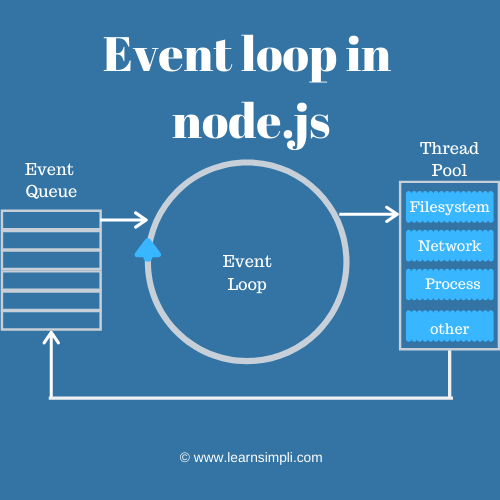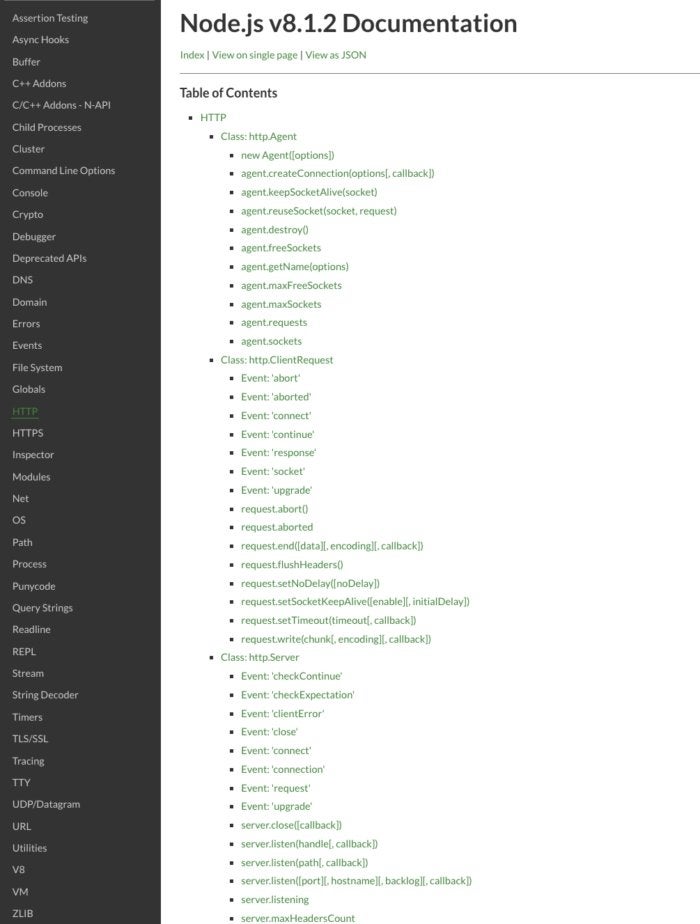

There’s also the overhead of context switching between threads and writing applications to optimize threads resource sharing can be painful.īecause of the single-threaded model Node.js, it doesn’t need to spin off new threads for every single request. Moreover, the server itself start to slow down because of increasing load. This is also very resource-heavy if we are expecting one million concurrent users we better make sure we have enough threads to handle those requests. If a lot of users are performing blocking I/O tasks then this wait time also increases. So let’s say if we have more users visiting our sites than there are available threads then some users will need to wait until a thread frees up to get response. Main drawback of this model is handling concurrent users.

Nodejs event loop free#
This thread is not free until a response is sent back.This thread will take care of reading Client requests, processing Client requestS, performing any Blocking IO Operations (if required) and preparing Response.When client request comes in a thread is assigned.It maintains a thread pool (a collection of available threads).This is how a traditional multi-threaded web application model handles request: To better understand what problem Node.js solves we should look at the what typical web servers were like before Node.js came into play.

However, in 2009 Ryan Dahl the creator of Node saw this simple event loop model as an opportunity to build a lightweight web server. Running everything in one thread is considered as a disadvantage. This is why it was built with the single-threaded event loop model. JavaScript was created to do just a simple things in the web browsers such as form validation or simple animations. What makes the Single Threaded Event Loop Model Efficient? ⚙️ So that’s why we see done reading file at the end. When the event loop is done executing everything in the events queue it will start executing the tasks in the call-back queue. A thread gets initiated from the thread pool to handle each blocking tasks and when it is done, it puts the result in a call-back queue. So whenever the event loop encounters these tasks it sends them off to a different thread and moves on to the next task in events queue. I/O tasks, network requests, database processes are classified as blocking tasks in Node.js.
Nodejs event loop code#
Now, let’s take a look at how our code runs inside of Node.js instance. For now, let’s think of it as a while loop that will run until Node has executed every line of code. It executes one command at a time, more on this later. Think of threads as a unit that lets you use part of your processor.Īn event loop is a continuously running loop (just like a while loop). Node.js runtime, however, initiates only one process.Ī threadis a basic unit to which the operating system allocates processor time. An application can be made out of many processes. Let’s dive in 🤿!! What happens when you run a Node.js Program?Ī processis an executing program or a part of an executing program. If you are looking to grow your knowledge of Node.js then this blog post is for you. JavaScript developers with a deeper understanding of Node.js reportedly earn 20% ~ 30% more than their peers.

What makes Node.js so performant and Scalable? Why is Node the technology of choice for so many companies? In this article, we will answer these questions and look at some of the advanced concepts that make Node.js unique.


 0 kommentar(er)
0 kommentar(er)
